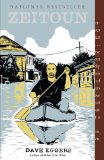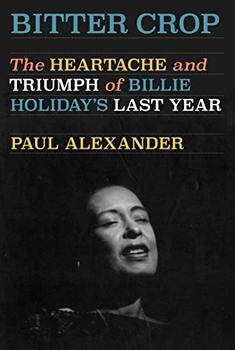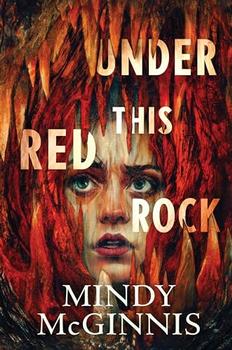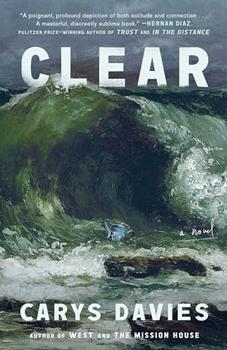Summary | Excerpt | Reading Guide | Reviews | Read-Alikes | Genres & Themes | Author Bio

Critics' Opinion:
Readers' Opinion:
First Published:
Apr 2003, 432 pages
Paperback:
Apr 2004, 448 pages
The bestselling author of The Professor and the Madman and The Map That Changed the World examines the enduring and world-changing effects of the catastrophic eruption off the coast of Java of the earth's most dangerous volcano -- Krakatoa.
The legendary annihilation in 1883 of the volcano-island of Krakatoa -- the name has since become a byword for a cataclysmic disaster -- was followed by an immense tsunami that killed nearly forty thousand people. Beyond the purely physical horrors of an event that has only very recently been properly understood, the eruption changed the world in more ways than could possibly be imagined. Dust swirled round the planet for years, causing temperatures to plummet and sunsets to turn vivid with lurid and unsettling displays of light. The effects of the immense waves were felt as far away as France. Barometers in Bogotá and Washington, D.C., went haywire. Bodies were washed up in Zanzibar. The sound of the island's destruction was heard in Australia and India and on islands thousands of miles away. Most significant of all -- in view of today's new political climate -- the eruption helped to trigger in Java a wave of murderous anti-Western militancy among fundamentalist Muslims: one of the first outbreaks of Islamic-inspired killings anywhere.
Simon Winchester's long experience in the world wandering as well as his knowledge of history and geology give us an entirely new perspective on this fascinating and iconic event as he brings it telling back to life.
Author's Note
I had first seen Krakatoa, or at least, the place where the great volcano had once been, when I was wandering through Indonesia as a foreign correspondent in the 1970's. The fact that this was the site of the greatest explosion in modern recorded history was truly awe-inspiring -- that I was just a few miles away from the center of so vast a cataclysm was a simple fact that exerted a powerful hold on me, and has ever since.
Some years later I read one of the very few books that recounted the events of 1883 in detail -- and I realized as I was reading that the writer (the book had been published in 1965) had not the faintest idea of just why Krakatoa had exploded, and why it had done so with such unimaginable ferocity. Back in 1965 there had been no scientific explanations: it was one enormous mess of mysteries. But, quite coincidentally, at just about the time I made my first visit, a whole new set of theories were being developed that would eventually account, with great precision, for almost every one of Krakatoa's dramatic acts. And so when I went there in the 1970s I was not just fascinated and awed: I knew why it had all happened.
The idea of my writing a book, now that we were all armed with this new knowledge, came to me only after I had written about William Smith, one of the fathers of early geology. The response from readers suggested to me that, all of a sudden, geology was being seen as a romantic science, and that, quite fantastically, it had developed cool. So I went off to Krakatoa once again -- and found to my utter astonishment that it had completely changed, that it had grown. It was 500 feet taller than when I had last seen it -- because whatever had caused it in the first place was still working. This tipped me over the edge: the original tale was a fine and awful story, and what is more the forces that had caused all the terror to take place were now fully understood. To write a new book, about Krakatoa yesterday, today and tomorrow, seemed all of a sudden just the most natural thing to do.
Contents
List of Illustrations and Maps -
Prelude
1. "An Island with a Pointed Mountain"
2. The Crocodile in the Canal
3. Close Encounters on the Wallace Line
4. The Moments When the Mountain Moved
5. The Unchaining of the Gates of Hell
6. A League from the Last of the Sun
7. The Curious Case of the Terrified Elephant
8. The Paroxysm, the Flood, and the Crack of Doom
9. Rebellion of a Ruined People
10. The Rising of the Son
Epilogue: The Place the World Exploded
Recommendations for (and, in One Case, Against) Further Reading and Viewing
Acknowledgments, Erkenningen, Terima Kasih
Index
Chapter One
"An Island with a Pointed Mountain"
Though we think first of Java as an eponym for coffee (or, to some today, a computer language), it is in fact the trading of aromatic tropical spices on which the fortunes of the great island's colonizers and Western discoverers were first founded. And initially supreme among those spices was the one rather ordinary ...

If you liked Krakatoa, try these:

by Dave Eggers
Published 2010
The true story of one family, caught between America’s two biggest policy disasters: the war on terror and the response to Hurricane Katrina.

by Jack Turner
Published 2005
A brilliant, original history of the spice trade, and the appetites that fueled it.





The House on Biscayne Bay
by Chanel Cleeton
As death stalks a gothic mansion in Miami, the lives of two women intertwine as the past and present collide.

The Flower Sisters
by Michelle Collins Anderson
From the new Fannie Flagg of the Ozarks, a richly-woven story of family, forgiveness, and reinvention.

The Funeral Cryer by Wenyan Lu
Debut novelist Wenyan Lu brings us this witty yet profound story about one woman's midlife reawakening in contemporary rural China.
Your guide toexceptional books
BookBrowse seeks out and recommends the best in contemporary fiction and nonfiction—books that not only engage and entertain but also deepen our understanding of ourselves and the world around us.